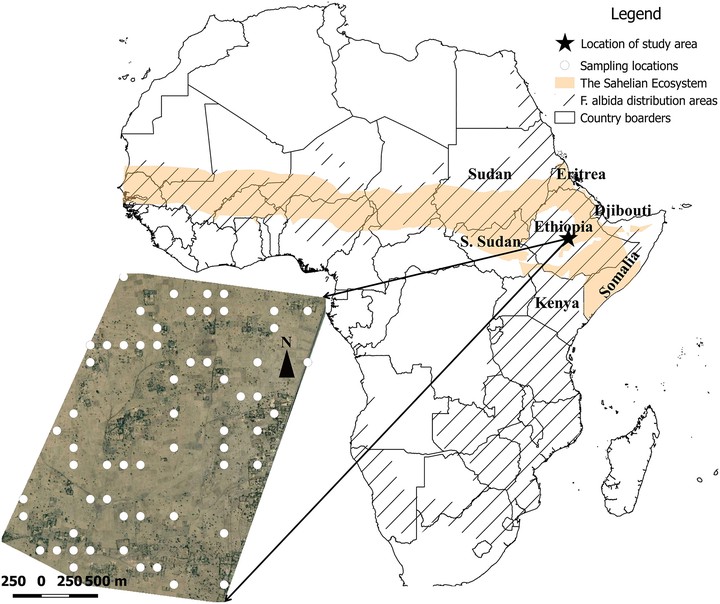Excessive pruning and limited regeneration. Are Faidherbia albida parklands heading for extinction in the Central Rift Valley of Ethiopia?

Abstract
Scattered Faidherbia albida trees provide multiple ecological and production benefits across the Sahel. The intensive management and use of this important tree may impede its regeneration. Regeneration bottlenecks were explored and population dynamics modelled. On experimental plots in which seed of F. albida was sown, exposure to the first 2 months of dry season resulted in a quarter of seedling mortality. Exposure to season-long free grazing and browsing caused significantly greater seedling mortality. Results from monitoring 100 permanent plots scattered over the landscape showed that adult population density was 4.2 +/- 0.3 (mean +/- SE) trees/ha and dominated by old age classes. Sixty percent of the total population were older than 30 years. The mean density for juveniles was 1.4 +/- 0.2 (mean +/- SE) individuals/ha. The annual rates of decline were 1.2%, 51.3%, and 63.2% for adults, seedlings, and saplings, respectively. Our model predicted that the F. albida population will start to decline within 1-2 decades to eventually fall below 1 tree/ha within 60 years under current management. The model highlighted that the limited seed source, caused by excessive pruning, was the main constraint for recruitment. Appropriate land management policy to ensure adequate seed production would avert current trends in decline of F. albida population.